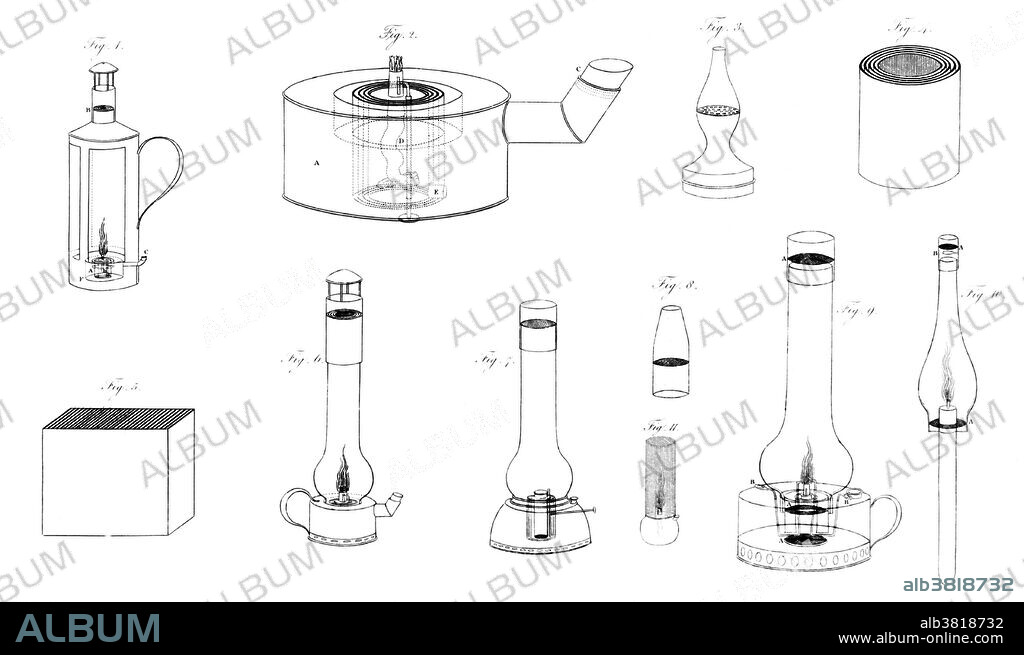alb3818732
Miner Safety Lamps Designed by Humphry Davy, 1816

|
Añadir a otro lightbox |
|
Añadir a otro lightbox |



¿Ya tienes cuenta? Iniciar sesión
¿No tienes cuenta? Regístrate
Compra esta imagen.
Selecciona el uso:

Título:
Miner Safety Lamps Designed by Humphry Davy, 1816
Descripción:
Ver traducción automática
The Davy lamp is a safety lamp for use in flammable atmospheres, invented in 1815 by Humphry Davy. It consists of a wick lamp with the flame enclosed inside a mesh screen. The lamp consists of a wick lamp with the flame enclosed inside a mesh screen. The screen acts as a flame arrestor; air can pass through the mesh freely enough to support combustion, but the holes are too fine to allow a flame to propagate through them and ignite any firedamp outside the mesh. It originally burned a heavy vegetable oil. The lamp also provided a test for the presence of gases. If flammable gas mixtures were present, the flame of the Davy lamp burned higher with a blue tinge. Lamps were equipped with a metal gauge to measure the height of the flame. Miners could place the safety lamp close to the ground to detect gases, such as carbon dioxide, that are denser than air and so could collect in depressions in the mine; if the mine air was oxygen-poor, the lamp flame would be extinguished.
Crédito:
Album / LOC/Science Source
Autorizaciones:
Tamaño imagen:
4800 x 2820 px | 38.7 MB
Tamaño impresión:
40.6 x 23.9 cm | 16.0 x 9.4 in (300 dpi)


 Pinterest
Pinterest Twitter
Twitter Facebook
Facebook Copiar enlace
Copiar enlace Email
Email
